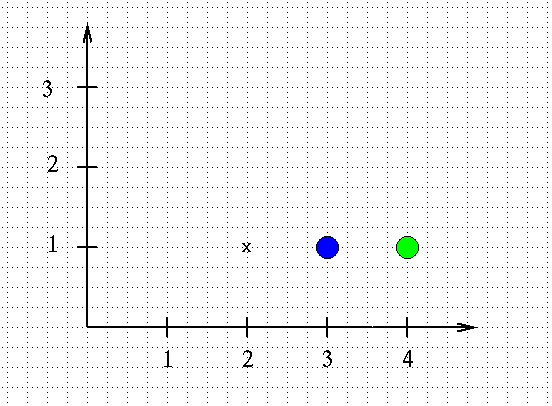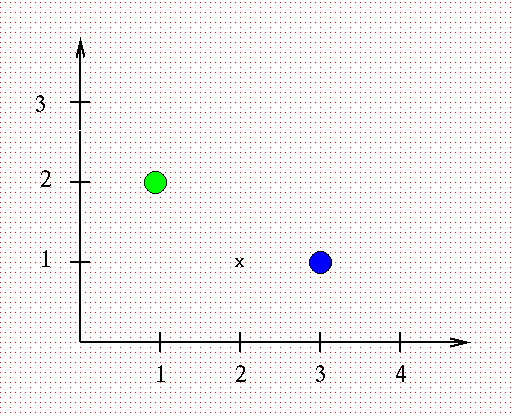Gravity is a vector force
The force of gravity has both a magnitude and a direction.
The magnitude is given by Newton's equation.
The direction is always
attractive, along the line connecting the two objects.
That means that sometimes you need to break the
force into components ....
Example 1:

A small metal cross "X" of mass
1 kg
is placed at location (2 m, 1 m)
- What is the gravitational force on the "X" due
to the blue ball of mass m = 6 billion kg?
- What is the gravitational force on the "X" due
to the green ball of mass m = 8 billion kg?
- What is the total gravitational force on the "X"?
- You have a red ball of mass m = 10 billion kg.
Where should you put it to produce a net
force of zero on the "X"?
Example 2:

The same small metal cross "X" of mass
1 kg
is placed at location (2 m, 1 m)
- What is the gravitational force on the "X" due
to the blue ball of mass m = 6 billion kg?
- What is the gravitational force on the "X" due
to the green ball of mass m = 8 billion kg?
- What is the total gravitational force on the "X"?
- You have a red ball of mass m = 10 billion kg.
Where should you put it to produce a net
force of zero on the "X"?


